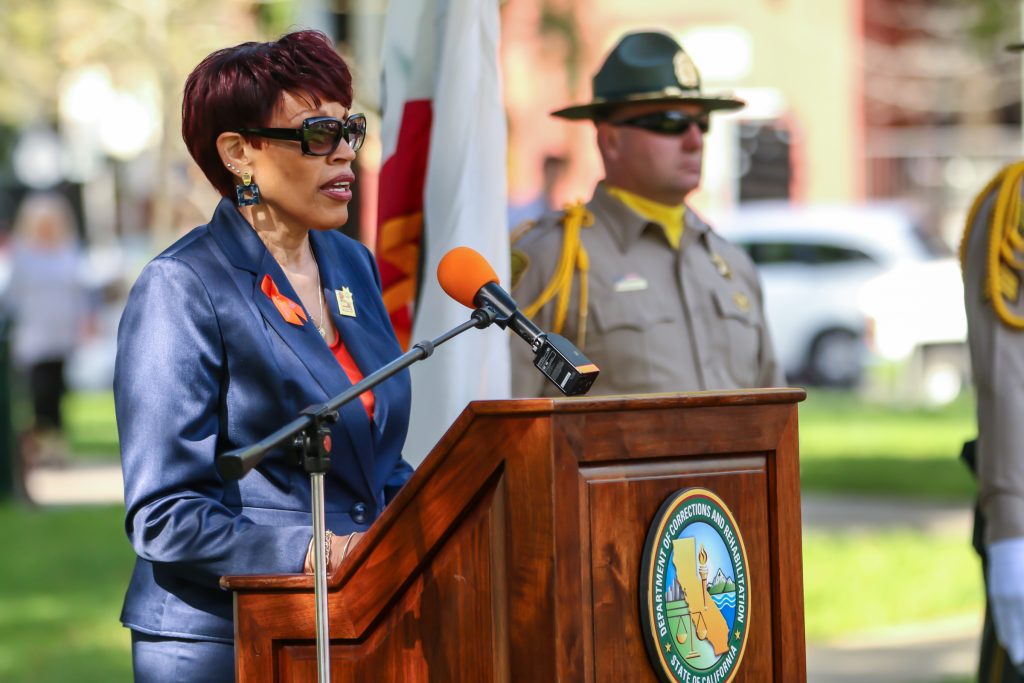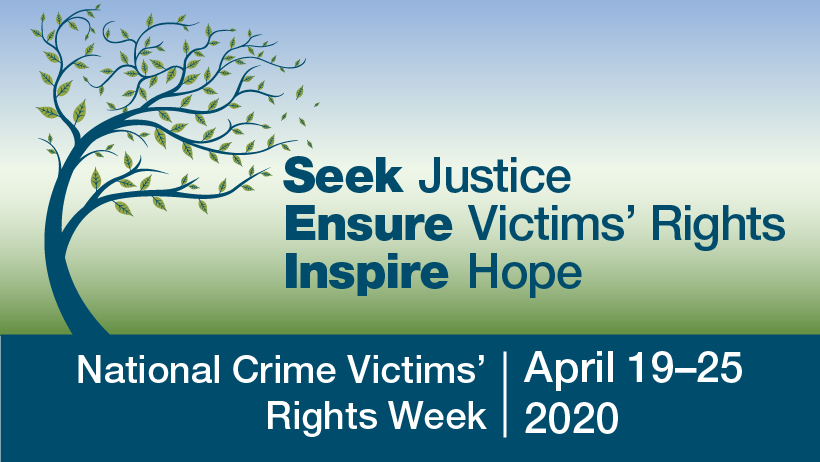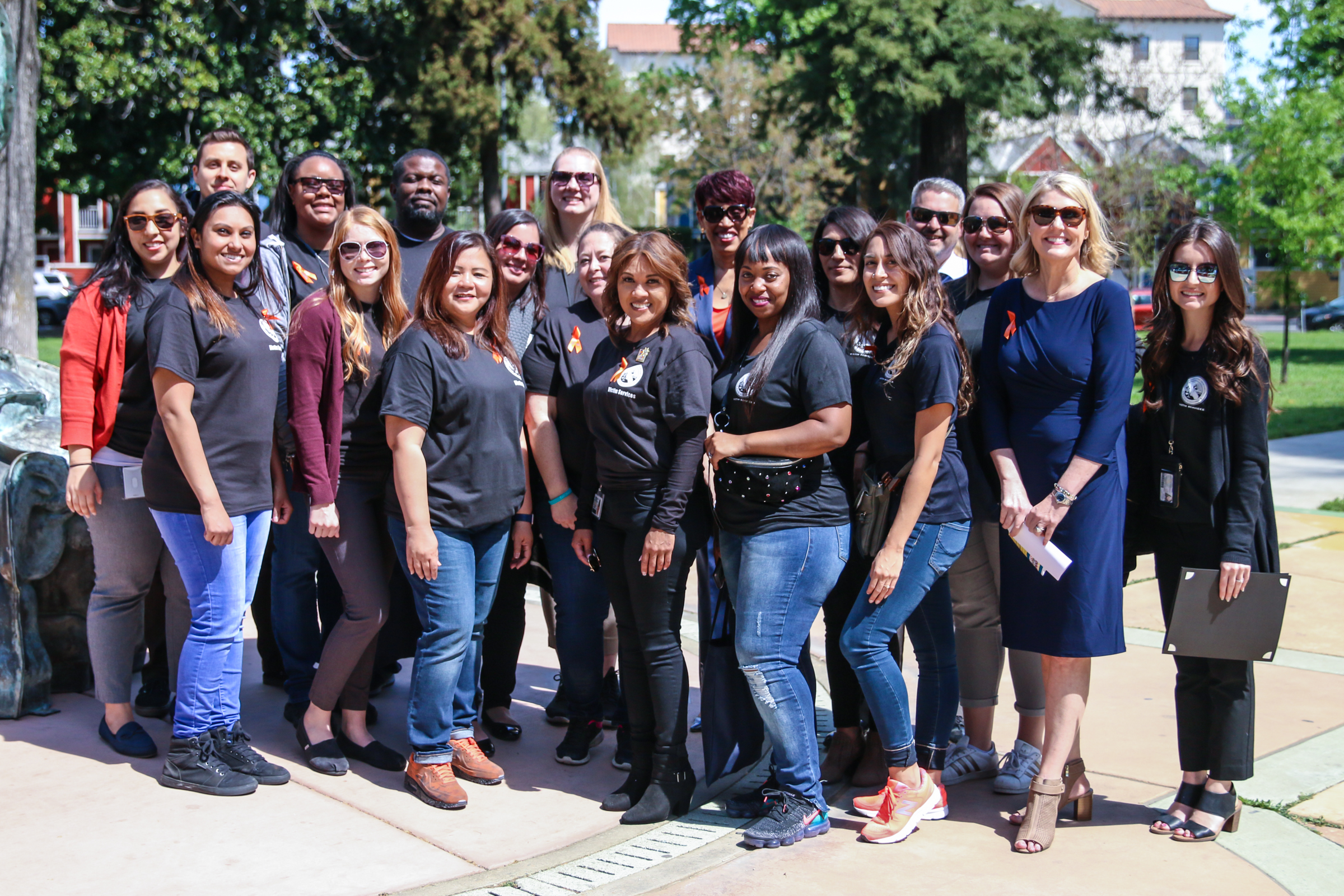How OVSRS delivers restitution to Ensure Victims’ Rights
(Editor’s note: OVSRS helps ensure incarcerated people understand their responsibility to victims, specifically regarding restitution.)
CDCR acknowledges and honors victims and survivors of crime each day, and especially during National Crime Victims’ Rights Week (NCVRW), April 19-25.
This year’s NCVRW theme — Seek Justice | Ensure Victims’ Rights | Inspire Hope — commemorates the individuals and groups whose advocacy has propelled the victims’ rights movement forward for the past half century, inspiring in victims and their loved ones a feeling of hope for progress, justice and healing.
This theme is championed by CDCR’s Office of Victim and Survivor Rights and Services (OVSRS). This dedicated team of hard-working professionals provide comprehensive post-conviction resources to victims and survivors registered with OVSRS.
This story explains how CDCR advocates for victims and survivors who have an offender who resides in our institutions with services like restitution ― collection and disbursement. It’s one of many ways the department works to Ensure Victims’ Rights.
By law, crime victims, survivors entitled to restitution
CDCR professionals working at OVSRS and at state institutions ensure incarcerated people understand their responsibility to victims and survivors — specifically restitution.
“Restitution is a basic right that holds offenders financially accountable for their criminal actions. This provides victims with monetary compensation to cover their losses resulting from crime,” said Tiffany Johnston, manager of OVSRS Restitution Services Unit.
All state correctional facilities offer transition classes that prepare the incarcerated for life outside the walls. These weekly classes provide information on finding a job, opening a bank account, paying bills and restitution.
OVSRS works closely with crime victims, their families, courts and inmates, making sure everyone understands how restitution works. OVSRS also helps coordinate the process.
The court must order offenders who are sentenced to state prison to pay a fine of between $300 and $10,000.
Normally, a restitution fine is ordered on every case unless there is an extraordinary reason stated on the record to not impose it. Direct orders are imposed when a victim has out-of-pocket expenses because of the crime. This reimbursement may not be ordered in every case.
How it looks, inside prison
In February at Folsom Women’s Facility, incarcerated women nearing their release date were provided information on their restitution responsibilities. This was part of a class dealing with how to prepare for their eventual release back to their communities. The discussion was led by Michael Rogowski and Elwina Rivera, both Restitution Services Liaisons with OVSRS.
“Does everybody know what restitution is?” Rivera asked the class. “It is your responsibility and you are obligated to pay it to your victims.”
Each student receives a Restitution Quick Reference Guide.
“Ninety days after release, CDCR sends information to the Franchise Tax Board (FTB),” Rogowski explained. “It’s important for you to work something out with FTB.”
CDCR refers the order of restitution debt to the California Franchise Tax Board for collection when they’re released from prison. The released offender must arrange with the Franchise Tax Board to satisfy the direct order restitution.
One student said the course was helpful.
“I learned some of the dos and don’ts that I need to be aware of,” she said. “I’ve been working with my family over the past few years. So, we are all on the same page with what I owe and what I’ll owe when I get out.”
As long as a restitution balance remains, CDCR collects 50 percent of prison wages and/or other money deposited into an inmate trust account.
“If there is payment on restitution, your family needs to know,” Rivera reminds them.
Since 2010, the OVSRS has successfully located 10,095 victims and disbursed more than $11.6 billion to victims. In 2019, OVSRS identified 2,282 more victims and disbursed a total of $1,970,444 to victims.

What are some other ways CDCR Ensures Victims’ Rights?
Victims and survivors can request to be notified of the release, death, escape, parole proceeding, or scheduled execution of their offender(s). Requests can be made by completing a “Request for Victim Services” form.
These individuals can also request input into the special conditions of parole. These are considered by the CDCR Division of Adult Parole Operations.
Victims and survivors are also welcome to attend and/or make a statement at parole suitability hearings. If they can’t attend the hearing but would like to participate, they can an audio connection. They may also opt to appoint a representative to attend, or submit a written statement or audio recording.
In addition to the Board of Parole Hearings, OVSRS works closely with:
- DAI partners
- Office of the Attorney General: Office of Victims’ Services
- The California Victim Compensation Board,
- California Secretary of State: Safe at Home Confidential Address Program
- Governor’s Office of Emergency Services.
Story by Joe Orlando
Office of Public and Employee Communications

https://www.cdcr.ca.gov/victim-services/
Read more rehabilitation stories.
Follow CDCR on YouTube, Facebook, X (formerly Twitter). Listen to the CDCR Unlocked podcast.
